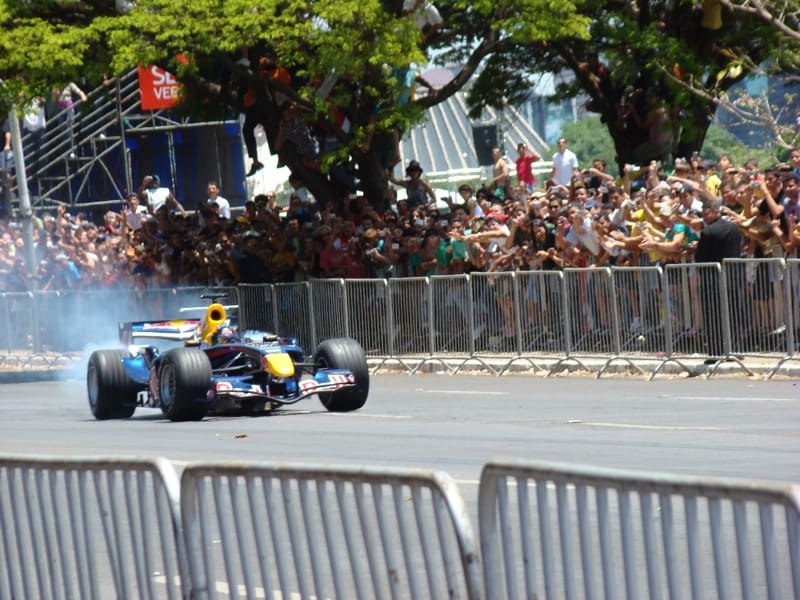Formula 1 is back, and if you’ve been thinking about jumping into the high-speed action, now’s the perfect time. With two races down and the third taking place this weekend in Japan, the season is just warming up. Here’s your explainer on what’s happened so far, who’s causing a stir, and what to watch for as the championship battle unfolds.
Why you should start watching now
If you’re new to F1, this season is shaping up to be a great entry point. The battles in the midfield are thrilling, the championship fight isn’t a foregone conclusion (yet), and with 24 races on the calendar, there’s plenty of time to get invested.
Plus, with South Africa pushing to bring a race back to Kyalami in the future, it’s a good time to get familiar with the sport. Here’s what you need to know.
McLaren’s early dominance
For the past three seasons, Red Bull and Max Verstappen have dominated Formula 1, with Verstappen securing four consecutive Drivers’ Championships (2021, 2022, 2023 and 2024). Red Bull’s technical supremacy and Verstappen’s consistency made them the undisputed frontrunners, leaving rivals struggling to keep up. However, in 2025, McLaren has emerged as a serious challenger, proving that the fight for the championship might not be as one-sided as before.
McLaren is now the team to beat in the opening rounds of the 2025 season. Lando Norris secured a victory in a rain-soaked Australian Grand Prix, showcasing his skill in challenging conditions. His teammate, Oscar Piastri, followed up with a flawless performance in China, leading from pole position to clinch his third career win. This marks McLaren’s 50th 1-2 finish in their history.
While Red Bull remains a formidable force, McLaren’s early dominance suggests a genuine title fight is brewing. If they can maintain their current momentum, 2025 could be the first season in years where Verstappen faces a true challenge for his crown.
Ferrari’s disqualification woes
Formula 1 isn’t just a battle between drivers—it also involves a competition between teams, known as the Constructors’ Championship. While the Drivers’ Championship determines the best individual driver over the season, the Constructors’ Championship rewards the best team, based on points earned by both of their drivers at each race.
In this particular championship, Ferrari had a tough time at the Chinese Grand Prix. Both Charles Leclerc and Lewis Hamilton were disqualified after the race due to technical rule violations.
Here’s what went wrong:
- Leclerc’s car was underweight: Every F1 car must meet a minimum weight limit at the end of a race. Leclerc’s car was found to be 1 kilogram too light. This happened because the rubber on his tyres wore down more than planned, making the car lighter than allowed.
- Hamilton’s skid block wore down too much: The skid block, or “plank,” is a piece of material underneath the car that prevents it from being driven too low to the ground. If it wears down too much, it means the car has likely been running too low, possibly giving it an unfair advantage in terms of aerodynamics. The FIA (Formula 1’s governing body) found that Hamilton’s car failed scrutineering—which is the post-race check to ensure cars comply with the rules.
Because of these rule breaches, both drivers were disqualified from the race, meaning Ferrari lost all the points they had earned in China. These disqualifications resulted in a loss of 18 constructors’ points for Ferrari, dealing a blow to their championship aspirations.
Early-season drama
Meanwhile, the opening races have been filled with notable incidents. In Australia, Norris’s victory was overshadowed by critiques of his performance under pressure, with former F1 driver Giedo van der Garde questioning his potential for a world title. Van der Garde highlighted mistakes Norris made during the Chinese Grand Prix, including veering off track and losing positions in the Sprint (the all-important start of the race), as well as failing to defend against George Russell after pit stops in the feature race.
The Chinese Grand Prix further amplified the season’s unpredictability. The disqualifications of Ferrari’s drivers as well as Alpine’s Pierre Gasly, who was also found to be underweight, reshuffled the race results—putting pressure on both teams to perform the rest of the season.
Japanese Grand Prix: What to expect
As the Formula 1 circus heads to Suzuka for the Japanese Grand Prix, anticipation is high. The Suzuka Circuit is renowned for its fast and technical layout, featuring iconic corners like the ‘S’ curves, the Degner Curve, and the 130R.
McLaren’s recent form positions them as favorites, but competitors like Mercedes and Red Bull are eager to challenge their dominance. Weather conditions could add an extra layer of unpredictability, as Suzuka has seen rain impact races before, forcing teams to make bold tyre and strategy calls.
So, buckle up! The Japanese Grand Prix is set to bring more drama, and we’re only just getting started.
Emma is a freshly graduated Journalist from Stellenbosch University, who also holds an Honours in history. She joined the explain team, eager to provide thorough and truthful information and connect with her generation.
- Emma Solomonhttps://explain.co.za/author/emma-solomon/
- Emma Solomonhttps://explain.co.za/author/emma-solomon/
- Emma Solomonhttps://explain.co.za/author/emma-solomon/
- Emma Solomonhttps://explain.co.za/author/emma-solomon/




